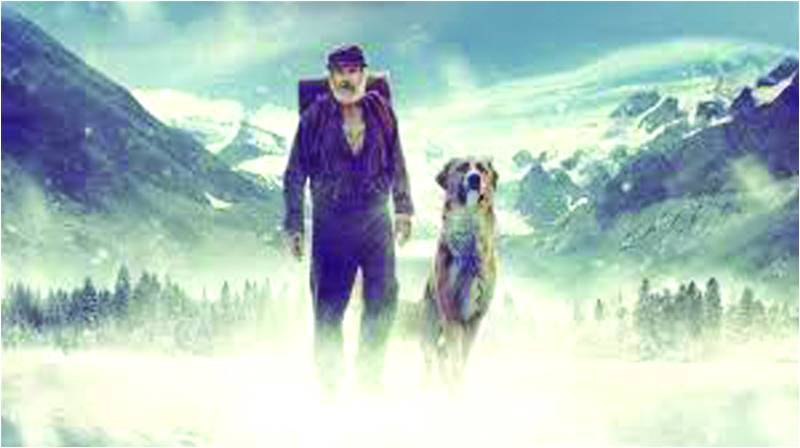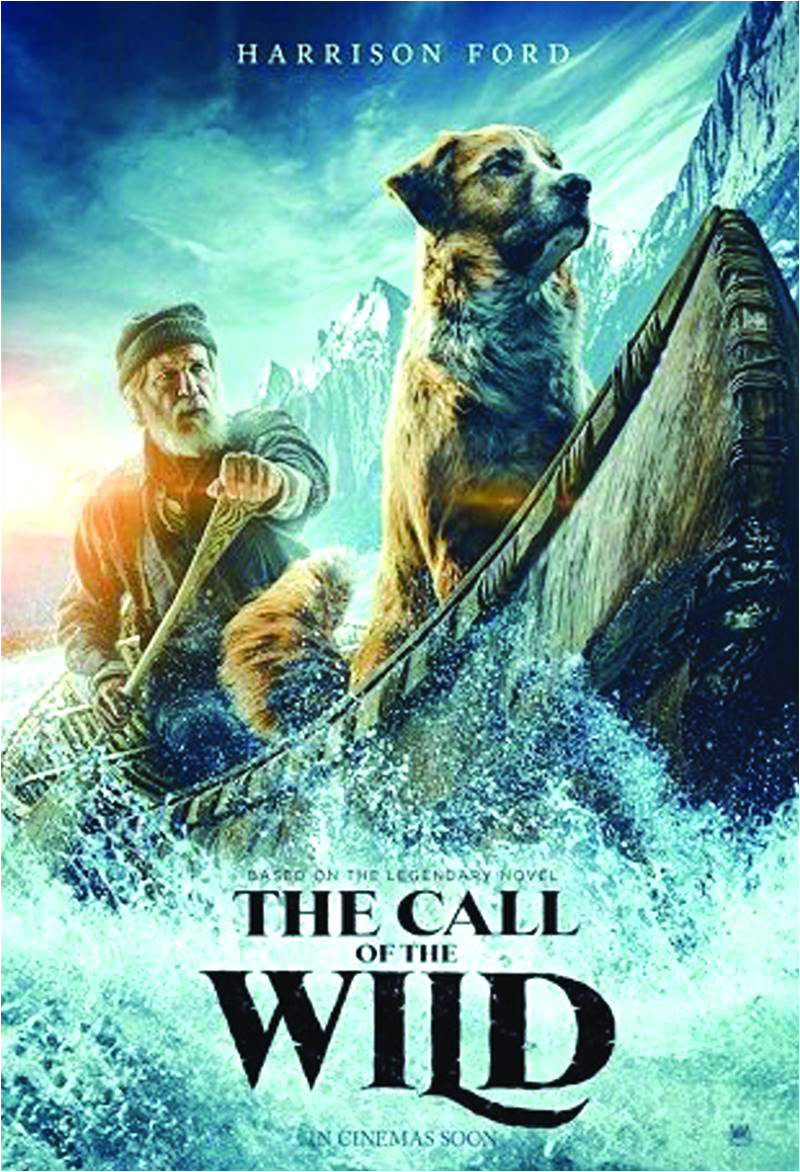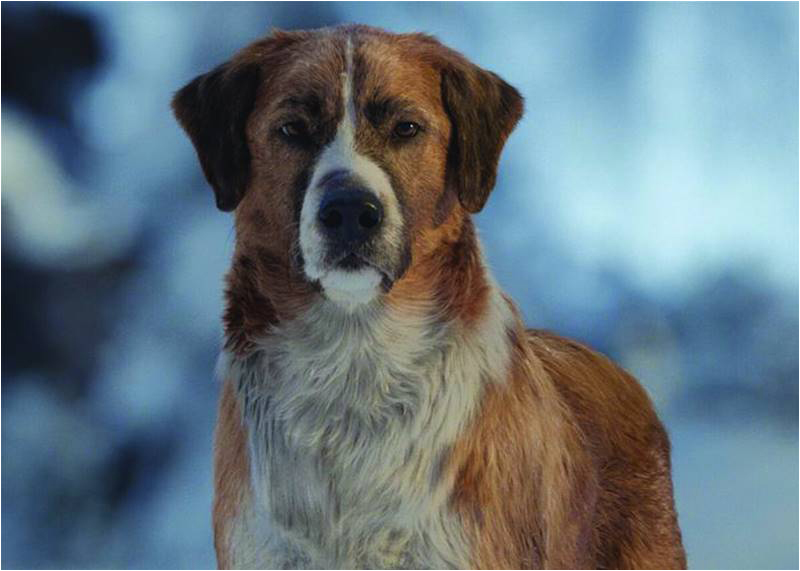
A lot of our recent conversations have been about the progress that filmmaking is making and the benefits – and challenges – that technology brings to the fore. We’ve discussed the advent of streaming platforms like Netflix and how they have transformed the cinematic experience around the world, now bringing about veritable change in Pakistan as well.
This week’s release draws parallels with a movie that was discussed in this space a little over a month ago, given how Dolittle used Computer Generated Imagery (CGI) in its depictions of animals just like The Call of the Wild has – although of course, the latter utilizes it for just the one.
What is also common between the two releases is the fact that both are based on books written early in the 20th century, and have seen multiple renditions in Hollywood.

In the case of The Call of the Wild, an adventure novel written by Jack London, there have been films released in 1923, 1935, 1972, 1981 and 1997 – starring the likes of Clark Gable, Charlton Heston and Richard Dreyfuss – in addition to TV and comic adaptations.
Last month’s adaptation, starring Harrison Ford, is the first this century. It is also the first film to use a CGI created Buck, the dog.
Going back to the questions that we have mulled in this space with regards to modern technology and its impact on how films are being made these days – or more specifically how classics are being recreated for the current audiences – almost the entire deliberation over the merits and demerits of the latest The Call of the Wild boils down to how you perceive the CGI-created Buck, which in all previous renditions was played by an actual dog.
CGI animals – and other creatures – have become household names over the recent years, and have garnered immense popularity. Even so, how do you see one of your favourite book characters, previously played by actual animals, now in CGI form? In other words, what is your taste for a CGI adventure, which originally wasn’t one?
The many-a-time read and viewed storyline centers around Buck, a local judge’s pet in late 19th-century California, who is spoiled by the many privileges that he enjoys. Life takes a harsh turn and Buck ends up in Alaska, now living in conditions about as contrasting to what he had been accustomed to, as possible. All of a sudden Buck has to earn his living delivering mail.

In a film, the commentary on the making of which is being dominated by the role technology plays on living creatures, the question springs up in the screenplay as well, as Buck is rendered out of work with the advent of the telegraph. Tougher drills follow, before John Thornton (Harrison Ford) – who had met Buck while receiving a delivery early on – comes to the rescue.
The storyline is as captivating as it has always been, in so many different forms, over the past century. However, for a generation with an increasingly decreasing attention span, the pace of the narration might not be what they’re accustomed to.
When it comes to technology, over the years it has been reiterated how it has reduced the human element – the same, of course, is true for other living creatures. If you’re old school, even in the slightest, you might prefer an actual dog playing Buck, providing challenges to filmmaking, which will soon become extinct.
But, of course, as one would expect, the cinematography is great and the visual experience of the adventure has details that were impossible the last time a version of The Call of the Wild was released. If you might enjoy that, the film would well be worth a watch.
This week’s release draws parallels with a movie that was discussed in this space a little over a month ago, given how Dolittle used Computer Generated Imagery (CGI) in its depictions of animals just like The Call of the Wild has – although of course, the latter utilizes it for just the one.
What is also common between the two releases is the fact that both are based on books written early in the 20th century, and have seen multiple renditions in Hollywood.

In the case of The Call of the Wild, an adventure novel written by Jack London, there have been films released in 1923, 1935, 1972, 1981 and 1997 – starring the likes of Clark Gable, Charlton Heston and Richard Dreyfuss – in addition to TV and comic adaptations.
Last month’s adaptation, starring Harrison Ford, is the first this century. It is also the first film to use a CGI created Buck, the dog.
Going back to the questions that we have mulled in this space with regards to modern technology and its impact on how films are being made these days – or more specifically how classics are being recreated for the current audiences – almost the entire deliberation over the merits and demerits of the latest The Call of the Wild boils down to how you perceive the CGI-created Buck, which in all previous renditions was played by an actual dog.
CGI animals – and other creatures – have become household names over the recent years, and have garnered immense popularity. Even so, how do you see one of your favourite book characters, previously played by actual animals, now in CGI form? In other words, what is your taste for a CGI adventure, which originally wasn’t one?
The many-a-time read and viewed storyline centers around Buck, a local judge’s pet in late 19th-century California, who is spoiled by the many privileges that he enjoys. Life takes a harsh turn and Buck ends up in Alaska, now living in conditions about as contrasting to what he had been accustomed to, as possible. All of a sudden Buck has to earn his living delivering mail.

In a film, the commentary on the making of which is being dominated by the role technology plays on living creatures, the question springs up in the screenplay as well, as Buck is rendered out of work with the advent of the telegraph. Tougher drills follow, before John Thornton (Harrison Ford) – who had met Buck while receiving a delivery early on – comes to the rescue.
The storyline is as captivating as it has always been, in so many different forms, over the past century. However, for a generation with an increasingly decreasing attention span, the pace of the narration might not be what they’re accustomed to.
The cinematography is great and the visual experience of the adventure has details that were impossible the last time a version of The Call of the Wild was released
When it comes to technology, over the years it has been reiterated how it has reduced the human element – the same, of course, is true for other living creatures. If you’re old school, even in the slightest, you might prefer an actual dog playing Buck, providing challenges to filmmaking, which will soon become extinct.
But, of course, as one would expect, the cinematography is great and the visual experience of the adventure has details that were impossible the last time a version of The Call of the Wild was released. If you might enjoy that, the film would well be worth a watch.

